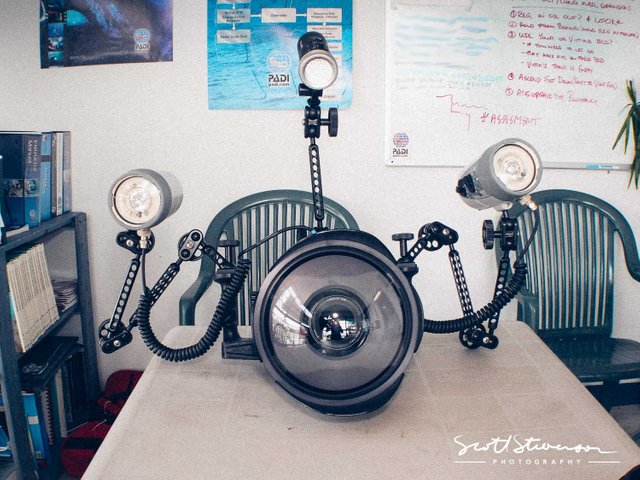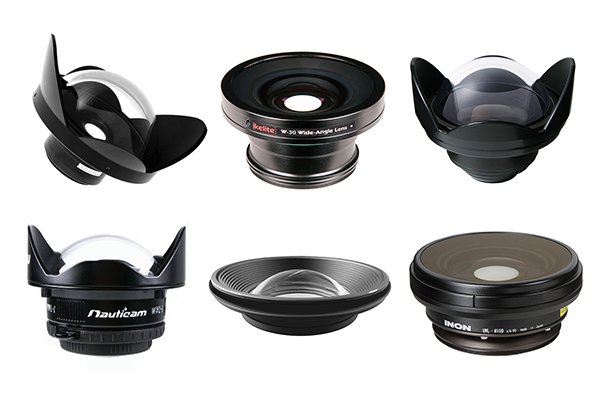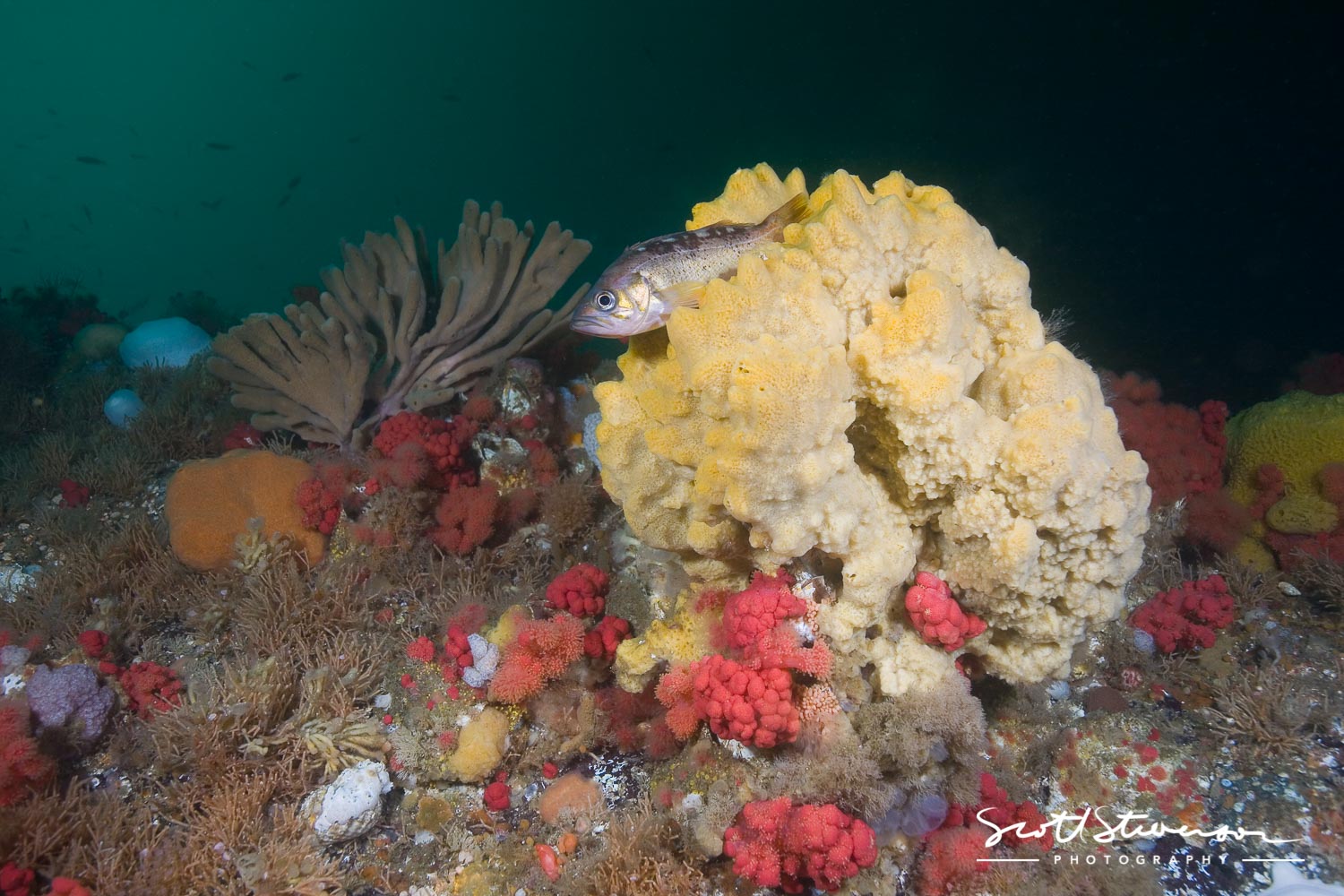Wide Angle Underwater Photography Part 2 - Equipment
In my this, my second post about wide angle underwater photography we are going to look at some of the equipment and some more technical aspects of how to shoot.
I’m doing will do my best to keep thing simple for those of you that are hoping to get into wide angle shooting but hopefully help those of you that have done this type of photography before.
Shooting wide angle photography can be accomplished with both a DSLR camera or a compact point and shoot camera. With either system you do need addition pieces of equipment beyond your camera and housing to create the desired images you want. No matter the type of equipment you use, the principles and techniques for wide angle photography are universal.
I’m going to start with DSLR because that is what I shoot with. I am currently running a Canon 17-40mm wide angle zoom lens as my go to wide angle underwater lens. I chose this lens for a multitude of reasons. First off I shoot with a full frame Canon camera, most of my diving is in the Pacific Northwest and the focal length of this lens works really well with the subject sizes I typically run into when shooting wide angle; seals and sea lions, small to medium size fish and the occasional large jellyfish and diver.
 My personal wide angle set up Aquatica Housing, strobes and 9' glass dome port
My personal wide angle set up Aquatica Housing, strobes and 9' glass dome port
For anyone reading this pick the lens that is best for you and what you want to shoot. If you are always around whale sharks then your going to need a wider lens.
When picking the lens for you there are several options: fisheye, zoom, fixed length. Fisheye lens have a low focal length and are typical a prime lens. Some examples are the Sigma 8mm, 10mm, or 15mm, the Tokina 10-17mm, Nikon 10.5mm or 16mm, and the Canon 15mm, these are extra-wide lenses with up to a 180 degree of view. Straight lines in the outer areas of the images will appear curved. The advantage to these lens is that you can get a lot in the frame and you can focus very close to your subject.
If you want something a little wider, you may choose something similar to what I have which is a zoom lens such as the Canon 17-40mm or the Nikon 14-24mm lens. These lens may not be as wide as a fisheye lens but they have less distortion on the edges and provide a great range that allows you to shoot multiple sizes of subjects over the course of a dive.
Lastly we have the prime or fixed length lens. These in my mind tend to be more specialized lens and if you're shooting with one you have a specific subject that your after or a specific style you want to create with your image. Typically you may use a Canon 35mm lens or if your shooting Nikon maybe a 24mm or 28mm lens.

(Image credit Backscatter.com)
When looking at purchasing a lens it's important to weigh the benefits of a zoom or prime lens. In order to provide a range of focal lengths, zoom lenses are built using multiple layers of glass and therefore produce softer images compared to prime lens. In general, the less glass there is the sharper your images will be. Typically prime lenses usually offer faster speeds in addition to producing sharper images, but require photographers to move themselves rather than the lens barrel to get closer or farther away from a subject, in an underwater situation this may be something that needs to be considered, such as shooting a subject while inside a shipwreck where mobility is limited. Lastly, the speed of prime lens is listed as just one f-number, whereas zoom lens will be expressed as a range of f-numbers for the different focal lengths, such as f/4.5–5.6. Think your purchases through, take your time and make the best decision that is right for you and your photography.
If you’re shooting with a compact camera you have the option of switching back and forth from wide angle to macro while underwater by using “wet lens”. These external attachments to your housings can easily be clipped on and off throughout the dive depending on what you want to shoot.

Wet lens and ports for compact cameras(images credit Backscatter.com)
Once you’ve got your lenses figured out the next most important piece of this wide angle puzzle is the utilization of a dome port. Dome ports essentially compensate for three issues that would otherwise be present due to the properties of water and light, or more specifically light travelling through both water and air before entering your lens. The curvature of a dome ports helps to minimize the effects of refraction, radial distortion and chromatic aberration.
 Comparing flat ports to dome ports (Image credit Aquatica Digital)
Comparing flat ports to dome ports (Image credit Aquatica Digital)
Dome ports come in all shapes and sizes depending on the housing you are using and the lens that you have chosen, so do your research and purchase the right one for your lens and application.
The last thing we are going to touch on is lighting a strobes. I will be going into great detail in my next post about this subject, but strobes are a necessary part of creating any wide angle image.
Thanks for reading and if you have any questions please let me know in the comments below.
Here is the link to part one of this series:
Part one of Wide Angle Underwater Photography - https://steemit.com/education/@scottdphoto/wide-angle-underwater-photography-part-1-the-basics
Scott
For more stories and images - http://www.scottstevensonphotography.ca/

very good and detailed information, about the use and manipulation of the different pieces of the photographic equipment .. hair fish, take care of it and keep it for you .. congratulations ... I invite you to read my last post and count on your vote.
Good
Very informative. Thank you. Love that little silver fish among the colorful coral. It look like you caught him up to something.
i like i love its scenery
That lighting setup is wild, never thought about how much goes into underwater photography!
The Aquatica Housing can accommodate any lens?
or do you have buy a different part to accomodate different ranges?
Did you ever use anything by Amphibico? I used to anodize their camera housings when I worked in my uncles plating shop during summers as a teenager.
I like underwater photos, although specialized cameras, very little, good work.
It does get a bit technical but the rewards are immense, when you are able to capture such exotic underwater shots!
The equipment looks expensive too.
Looking forward to you post on strobes!